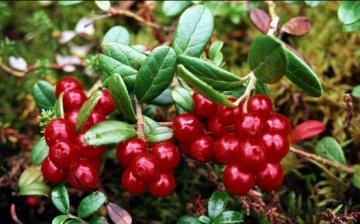Planting lingonberries in a personal plot
It is generally accepted that lingonberry is exclusively a forest inhabitant. However, in recent years, the number of enthusiasts who grow garden lingonberries on their backyards has been increasing.
If you decide to grow lingonberries on your own, then the recommendations for planting and caring for this plant will undoubtedly come in handy.
- For lingonberries to grow successfully, provide them with an acidic soil. The optimum pH for this culture is in the range of 4.5-5.5. To increase the acidity, powdered sulfur can be mixed into the soil.
- Planting lingonberries does not require a special mechanical state of the soil, but it is necessary to ensure that there is no stagnation of water in the beds. Lingonberries are more likely to patiently tolerate a lack of moisture than an excess of it.
- It is preferable to plant garden lingonberries in a mixture of peat and sand. Observe a distance of 30 cm between the bushes, and 25 cm between the rows. Lingonberry bushes of 1-2 years old are suitable for planting. After placing the plants on the ridges, they are watered abundantly.
- Planting lingonberries requires very careful application of mineral fertilizers. Overfeeding of plants is highly undesirable! Beware of fertilizers that contain calcium chloride. In small doses (literally 5 g / m2), only superphosphate is useful for lingonberries. It is also not worth getting carried away with organics, it is quite enough that lingonberries grow in a fertile peat mixture.
- With proper care, the culture bears fruit twice a year - in the summer (July - August), in the fall (late September - October). The richest yields are given by lingonberry bushes at 5-6 years of age.



